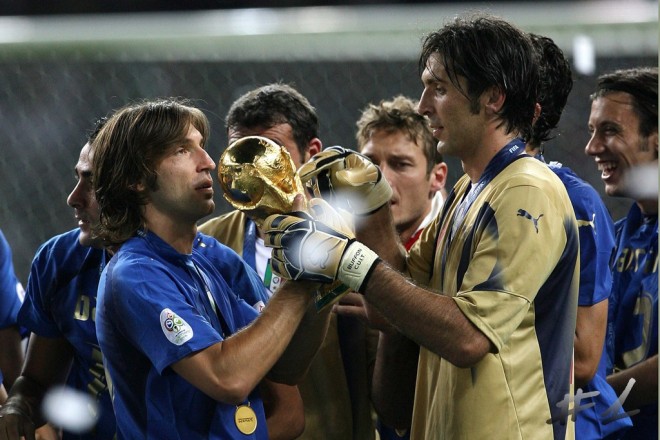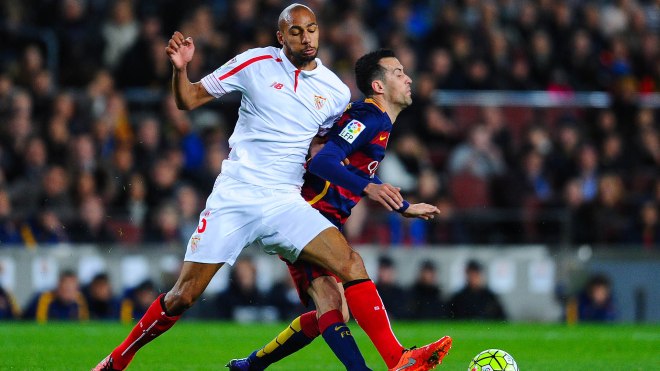The regista is the conductor of the orchestra that is their team. They orchestrate the game by controlling the tempo and dictating play from deep positions, receiving the ball from their centre-backs within their own half and providing the link between defence and attack. Through the use of complex, long and diagonal passes, they begin to orchestrate the play akin to the use of batons by great conductors such as Richard Wagner and Gustav Mahler. It can be argued that passing is the single-most important asset for a player in this role as they require expansive passing ranges and pin-point accuracy to dictate play. Great vision is required to recognize space or spot the run of a teammate and clever decision-making to choose between a speculative, long-ball and a simple pass back to the centre-back is also key. The regista has proven to be effective, exemplified by Italy winning World Cup 2006 with Andrea Pirlo in this role and Spain winning both Euro 2008 and World Cup 2010 using Xavi. In spite of this, could the typical regista be losing its effectiveness?

Andrea Pirlo is seen as the quintessential regista in the modern game. Vision, skill, creativity, intelligence, technique and passing; Pirlo has them all. Sergio Busquets, the magnificent conductor of Barcelona’s orchestra, is another player that has mastered this role. Heralded by the late, great Johan Cruyff as “a gift for any coach” and by Pep Guardiola as being the “best defensive central midfielder in the world, Busquets is another typical regista. Such praise is immense seeing as Guardiola was arguably the pioneer of the regista role and was a vital cog in the Barcelona machine that was the “Dream Team” that won the Blaugrana’s first European Cup in 1992. However, classic registi like Sergio Busquets, Andrea Pirlo and Xabi Alonso all have a shared flaw: they are vulnerable to pressure from opposition. They can all be removed from the game by intense pressure from opposition leading to either dispossession or mistakes as they lack the dribbling ability to be able to evade the press. As a result of this flaw, a new type of regista has become: the mobile regista¹.

The mobile regista¹ is a player who possesses the same qualities that a typical player in this role would do, but additionally they utilise their dribbling ability to evade a press. Thiago Alcântara for Bayern Munich and Amadou Diawara for Napoli are examples of this new breed. The latter has been a pivotal player for Sarri’s Napoli, serving as the team’s conductor sitting at the base of a three-man midfield. Diawara utilizes his flair and dribbling to evade pressing players whilst also exploiting his physical presence when necessary. Diawara has a pass success rate of 91% and averages 1.9 tackles per game and 1.7 interceptions per game. These statistics show that he is effective both offensively and defensively but does his additional mobility increase his ability to evade a press? Diawara averages a very low 0.4 dispossessions per game which does, in fact, support the theory that increased mobility and versatility improves press-evasion.

Thiago Alcântara has had similar success after adopting a deeper role during Carlo Ancelotti’s first season at Bayern despite being a natural 8. He has filled in for the prototypical regista Xabi Alonso at times this season and this is particularly convenient as this allows us a greater extent of context in comparison as one is the versatile deep-lying playmaker and the other more classical. Thiago averages a pass-success rate of 91% per game in comparison to Alonso’s rate of 90%, which is not very significant, but there is a notable difference in the defensive statistics between the two. Thiago has averaged 3.6 interceptions per game and 2.5 tackles per game, whereas Alonso has averaged 2.6 interceptions per game and 2.1 tackles per game which is notably lower. These statistics suggest that perhaps due to the difference in mobility, Thiago has had an increased defensive contribution as he can cover more ground than the Alonso. More crucially, Alonso has averaged 1.0 dispossessions per game in comparison to Thiago’s 0.5 which supports the theory that mobile registi are less vulnerable to a press than typical model. The difference between the average dribbles per game of the two truly distinguishes the versatile regista from the other, with Thiago averaging 1.8 dribbles per game in comparison to Alonso’s average of 0.1. These statistics, interpreted in the context of effectiveness as a regista, indicate that the versatile deep-lying playmaker is more effective and dynamic than the conventional one.

The future of the regista appears to be heading towards the direction of the more flexible and versatile player. This model has shown to be effective in evading the press thus eliminating the major flaw of a conventional deep-lying playmaker. Nonetheless, we are yet to see the extent of success which this new breed of 6 achieves. Could clubs who use a mobile regista¹ in their team win the Premiere League, Bundesliga or La Liga? Could they even win the Champions League? Amadou Diawara and Thiago Alcântara are still in the Champions League with their respective clubs and could potentially be playing in the aforementioned role during the Round of 16, with Diawara’s Napoli coming up against European giants Real Madrid and Thiago’s Bayern coming up against Arsenal for the fifth time in Champions League history. Diawara and Thiago are merely two examples of this new breed of regista, but there are many more. Top European clubs have fielded more versatile and mobile players in the 6 role: Fernandinho for Manchester City, Matić for Chelsea and N’Zonzi for Sevilla. Pep Guardiola, arguably one of the best managers in the world, has experimented with Vidal in this role against Juventus in the Champions League 2015-16 season. The emergence of young Frenchman Wylan Cyprien in Ligue 1 for Nice is another to add to this newborn type of regista. Will the trend of the mobile regista¹ continue? Will further players in this mould emerge? Will more European clubs use more versatile and mobile 6’s their team? Only time will tell.
¹ Mobile regista: A term coined by @Registability which is defined as being a player that has “the mind of a typical regista, but with the ball skills of a technical centre-midfielder.”
This have a main disadvantage, the fact is that when a Regista has to run (when dribbling) so much it is much more complicated to make clear passes. It requires lot’s of energy to make that long quality passes. Ricardo Lavolpe solution to this is that when the pressure is too high you can make a decent pass to a flank with another player that isn’t necessarily the Regista.
LikeLike
I think I am a bit sceptical about the major flaw in the classical regista…Think it’s a bit exaggerated in your article. A great read nonetheless
LikeLike
[…] + One more. If you’re excited we’re dabbling with a regista in Xhaka, read how the game is already looking to move on with this article here. […]
LikeLike